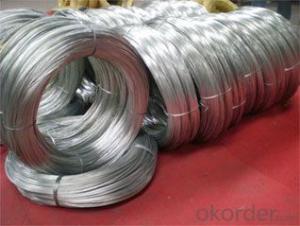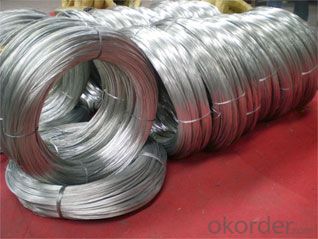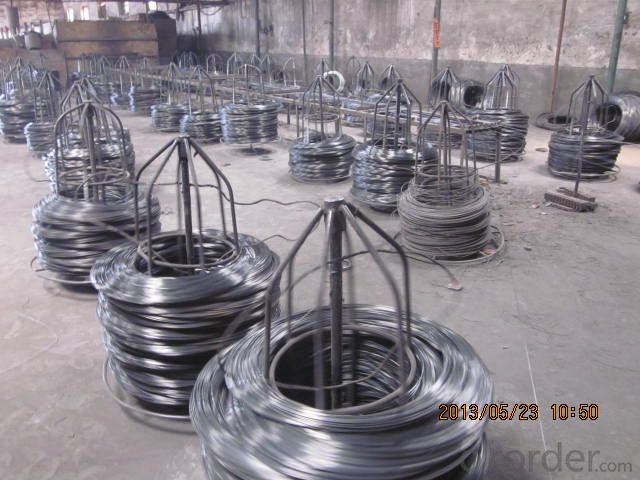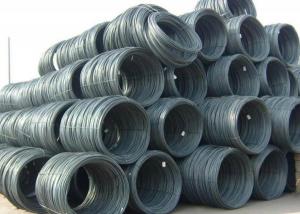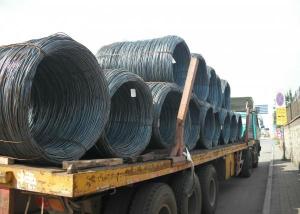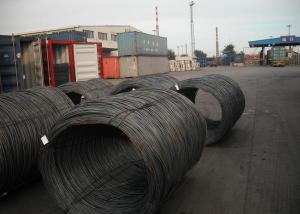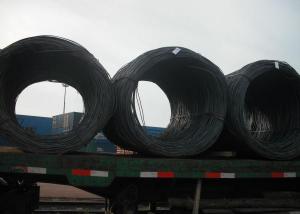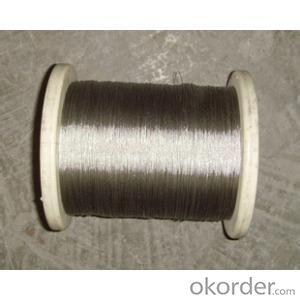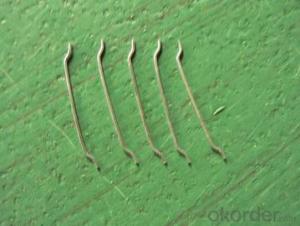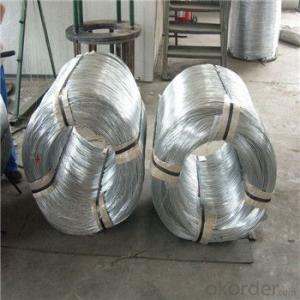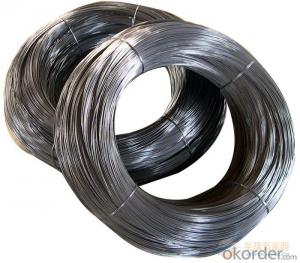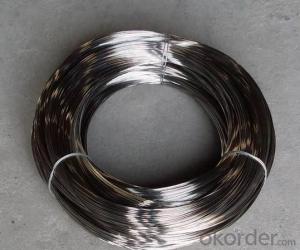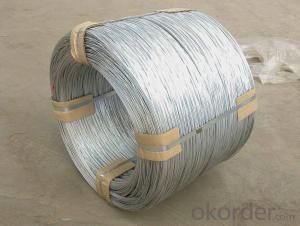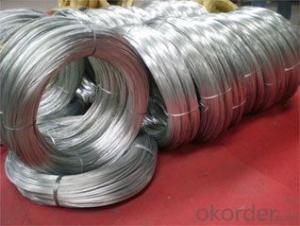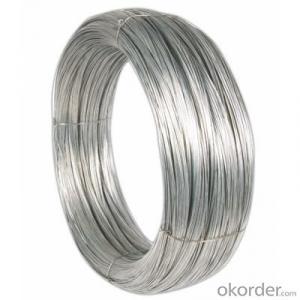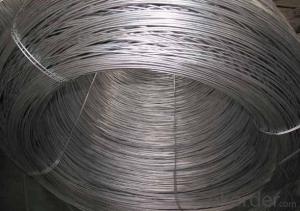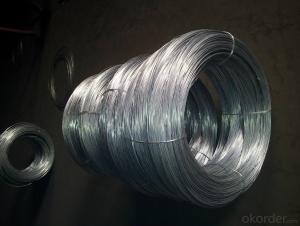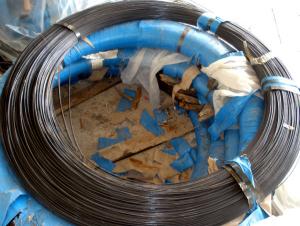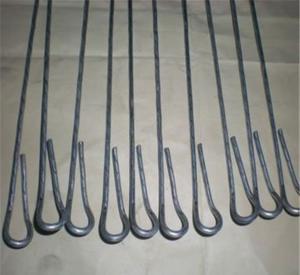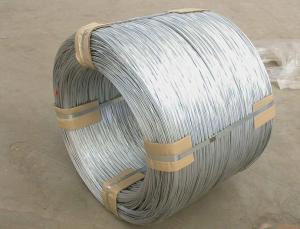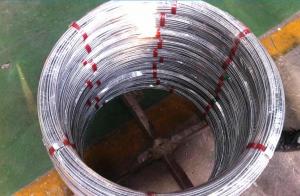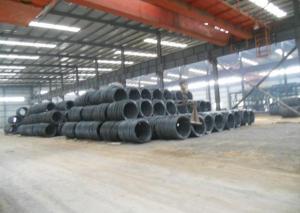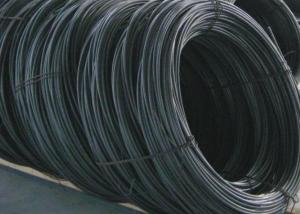Hot dipped galvanized wire of good quality
- Loading Port:
- China Main Port
- Payment Terms:
- TT OR LC
- Min Order Qty:
- -
- Supply Capability:
- -
OKorder Service Pledge
OKorder Financial Service
You Might Also Like
| |||||||||||||||||||||||||||||||||||||||||||||||||||||||||||||||||||||||||||||||||||||||||||||||||||
- Q: i think i messed up the wiring to my headunit. its not the wiring going into the headunit, there is no power from the wires. how much should it cost to get the wires checked out and fixed somewhere?
- If your talking about the power wire the feeds the radio on the eclipse then you need to check both fuses. On the eclipse they put an in line fuse before the fuse box and one at the fuse box and either one could be blown. If neither one is blown then you do have a break in the wire. does not half to be cut but it can be an internal break. If i was you and the fuses are not blown i would run your own wire from the battery with an in line fuse to your radio. This happened to me so that's how i know about the two fuses. hope this helps.
- Q: Two wires are made of the same material but the second wire has twice the diameter and twice the length of the first wire. When the two wires are stretched, and the tension in the second wire is also twice the tension in the first wire. the funamental frequency of the first wire is 880 Hz. What is the fundamental frequency of the second wire?
- Since the tension and size are different the two wire will have different wave speeds Since v= sqrt(T/mu) mu can be represented by density * area Since the second wire has twice the diameter it will have 4 times the mu and since Tension in wire 2 is twice that in wire 1 v2 = sqrt(2T/4mu) sqrt(.5)*v1 = 0.707*v1 Since f1 (wire 1) = v/2L1 then f2(wire 2) = v2/2L2 so replacing v2 and L2 yields 0.707v1/(2*2*L1) = 0.707/2(v1/2L) = 0.707/2 *f1 = 0.707/2*880Hz = 311Hz
- Q: Coming from my ceiling I have a black, a grey, 2 white, 2 bare and a red wire. Coming from my ceiling fan/light fixture is a green, black, black with a white stripe and a white wire. How exactly would I go about wiring this? It is a two switch setup without a remote.Thank you in advance.
- I have hooked up ceiling fans and your question is common. Did the fan come with intructions, does the fan have a light attached. Find the correct breaker and turn it off. First hang the fan where you can assemble the wires together. Black wire to black wire. One white from the ceiling to one white. The bare wires one of these wires grounds to either the metal box you attached the fan to or to one of the srcews. Keep the wires from touching. Maybe the green to the grey. I hate to tell you to guess from here. all you can do is trip the breaker if not correct,
- Q: Okay, i put a cd player in my Integra wrong in the first place an i blew my headlights, dash lights, and taillights. Are there separate wiring harness/ for the motor and interior? I have a B-series, I'm looking at a B-series Wiring Harness online an is that what i need? Or is there a separate interior wiring harness i need to make my lights work again? Help would be appreciated.
- Integra Wiring Harness
- Q: Im Very Curious As To How Did The Designer Orese Make Her, African Continent Shape Wire Earrings? I Have The Supplies To Make Wire Earrings. I Would Love To Do A Personal DIY! :~)
- as well as on the first page link above, under the category Wire-Framing (P.S. Why did you use initial caps on all words in your question?...kinda hard to read.) .
- Q: Given following setup of three wires in the plane of the page with I1 = 1.3 A (to the right), I2 = 3.4 A (to the right), I3 = 4.5 A(to the left) and each wire is separated by 3 m.I'm completely lost, I need to..1. What is the direction of the magnetic field at wire 3 due to wires 1 and 2?2. What is the direction of the force on wire 3 due to wires 1 and 2?Any help would really be appreciated! Thanks!
- I assume that those wires are sitting parallel 3 m apart from one another. 1. The magnetic field around a wire forms concentric circles around the wire. Wire 1 and Wire 3 are parallel so when you draw a concentric field line around Wire 1 with radius 6 m, you get a magnetic field line passing Wire 3 at a right angle. And a concentric field line around Wire 2 with radius 3 m passes Wire 3 at a right angle. Both magnetic fields have the same direction because the current in both wires flows in the same direction (to the right). Using the right-hand rule, you can find that the magnetic field at wire 3 due to Wire 1 and Wire 2 goes into the page. Ans: Into the page 2. The force on a wire can be calculated in the following manner: I X B * L. Here I is the current on Wire 3, B is the magnetic field due to Wire 1 and Wire 2, L is the length of Wire 3, and X is the cross product operator. So I cross B would give the direction of the force. Now use the right-hand rule, I cross B will give the force direction pointing down. This means the force due to the magnetic field would repel Wire 3 from Wire 1 and Wire 2. Ans: The force on Wire 3 due to Wire 1 and Wire 2 would repel Wire 3 from them.
- Q: If I have wired my 20 amp kitchen receptacles with 12/2 wire which only has a red, black, and ground wire, do I use the red wire for a neutral and the black as a hot?
- You deffinatly need to put white tape on that red wire and to make it known as being a neutral.... The black wire is always going to be a hot in receptacle circuits...
- Q: I have a ceiling fixture outlet which has 4 wires coming out (red, black, white and uninsulated ground). There is only one light switch that controls it. I wanted to attach a light fixture to connect to that, but the light fixture only has 3 wires (red, white and green - ground). How do I connect this light fixture to the 4 wires?
- Canada and the USA Usually the Red wire in the cieling outlet is controlled by the switch. The Black wire in the cieling outlet should be live all the time. Cap the black wire off with the proper size wire nut. The white wire in the cieling outlet is the common wire. The bare wire in the cieling outlet is the ground wire. it should be attached directly to the metal ground screw in the outlet. The green wire on the light fixture must be connected to the ground screw in the cieling outlet. Connect the white wire on the light fixture to the white wire in the cieling outlet Connect the red wire on the light fixture to the red wire in the cieling outlet. If this does not work, whoever did the wiring did not follow convention. Interchange the red and black cieling outlet wires: Connect the red wire on the light fixture to the black wire in the cieling outlet. Cap off the red wire in the cieling outlet with the proper sized wire nut.
- Q: Cant find were to tap the wiring for the puddle lights. Can some one please help!
- i in my opinion only offered a Silverado 1500 on Friday, and that i honestly like it! i appreciate the OnStar, and the XM radio good factors. also, i imagine that's in user-friendly words a extra effective searching truck. As for the experience, that's an truly tender experience, like a Cadillac. mutually, its were given extremely some capacity in the back of it. The warranties are large too. It even comes with a 6 365 days assure on rust! i might want to flow with the Silverado for constructive!
- Q: I have a 300 watt pioneer home stereo and four 15speakers that are250 watts each would it be ok to use this wire i just bought here is the link was wanting to know if it was ok to use if it seas car stereo wire thanks
- Its not very good wire the CCA stands for copper clad aluminum in other words its not real copper wire its aluminum... You need good copper wire for best results... also Oxygen Free Cooper wire or (OFC) is even better look for copper wire they have it on OKorder...OFC is better because the copper content is higher but most copper wire is still good and has good copper content if its advertized as copper wire...
Send your message to us
Hot dipped galvanized wire of good quality
- Loading Port:
- China Main Port
- Payment Terms:
- TT OR LC
- Min Order Qty:
- -
- Supply Capability:
- -
OKorder Service Pledge
OKorder Financial Service
Similar products
Hot products
Hot Searches
